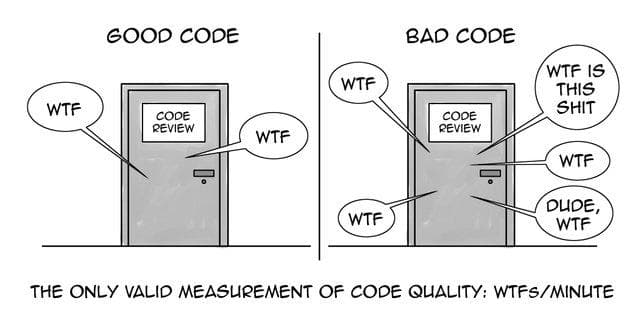I ran into an issue whilst doing a machine learning project involving some categorical data and thought I would write a brief tutorial about what I learned. I was working on a model which had a considerable amount of categorical data and I ran into several issues which can briefly be summarized as:
- Categories that were present in the training set were not always present in the testing data
- Categories that were present in the testing set were not always present in the training data
- Categories from “real world” (IE non testing or training) data were not present in the training or testing data
Handling Categorial Data: A brief tutorial
In Python, one of the unfortunate things about the scikit-learn/pandas modules is that they don’t really deal with categorical data very well. In the last few years, the Pandas community has introduced a “categorical” datatype. Unfortunately, this datatype does not carry over to scikit-learn, so if you have categorical data, you still have to encode it. Now there are tons of tutorials on the interweb about how to do this, so in the interests of time, I’ll show you the main methods:
GetDummies in Pandas
The most conventional approach and perhaps the easiest is pandas get_dummies() function which takes the input of a given column or columns and returns dummy columns for each category value. (Full docs here). Thus you can do the following:
df = pd.get_dummies(df)
| data | |
|---|---|
| 0 | a |
| 1 | b |
| 2 | c |
| 3 | a |
| 4 | a |
| 5 | a |
| 6 | c |
| 7 | c |
| 8 | c |
| data_a | data_b | data_c | |
|---|---|---|---|
| 0 | 1 | 0 | 0 |
| 1 | 0 | 1 | 0 |
| 2 | 0 | 0 | 1 |
| 3 | 1 | 0 | 0 |
| 4 | 1 | 0 | 0 |
| 5 | 1 | 0 | 0 |
| 6 | 0 | 0 | 1 |
| 7 | 0 | 0 | 1 |
| 8 | 0 | 0 | 1 |
Which turns the table on the left into the table on the right.
As you can see, each category is encoded into a separate column with the column name followed by an underscore and the category variable. If the data is a member of that category, the column has a value of 1 otherwise the value is zero, hence the name One Hot Encoding.
In general this works, but the pandas method has the problem of not working as a part of a Scikit-Learn pipeline. As such scikit-learn also has a OneHotEncoder which you can use to do basically the same thing.
Personally, I find scikit’s OneHotEncoder to be a bit more difficult to use, so I didn’t really use it much, however, in my recent project I realized that I actually had to for a reason I’ll get to in a bit.
Scikit Learn’s OneHotEncoder
Scikit-Learn has the OneHotEncoder() (Docs here) which does more or less the same thing as the pandas version. It does have several limitations, and quirks. The first being that the data types of your categories must be the same. IE if you have ints and strings, no go.. Secondly, scikit’s encoder returns either a numpy array or a sparse matrix as a result. Personally, this was annoying for me as I wanted to see what categories were useful as features, and in order to do so, you have to reconstruct a dataframe, which is a headache. In general, the code follows scikit’s general pattern of fit(), transform(). Here is example code of how to use scikit’s one hot encoder:
from sklearn.preprocessing import OneHotEncoder
encoder = OneHotEncoder(handle_unknown='ignore')
encoded_data = encoder.fit_transform(df[<category_columns>])
There are two advantages that I see that scikit’s method has over pandas. The first is that when you fit the scikit encoder, it now “remembers” what categories it has seen, and you can set it to ignore unknown categories. Whereas pandas does not have any recall and will just automatically convert all columns to dummy variables. The second is that you could include the OneHotEncoder in a pipeline which seemed like that would be advantageous as well. However, these advantages did not outweigh the difficulty of getting the data back into a dataframe with column labels. Also, I kept getting errors relating to datatypes and got really frustrated.
The original problem I was having was that you couldn’t guarantee that all categories would be present in both the training and testing set, so the solution I came up with was to write a function that switched the category value to “OTHER” if the category was not one of the top few. But I didn’t like this approach because it required me to maintain a list of categories and what happened if that list changed over time? Surely there’s a better way…
Feature-Engine: A Better Solution
So what if I told you there was a way to encode categorical data such that you could:
- Handle missing categories in either testing, training or real world data
- Export the data to a DataFrame for easy analysis of the newly created features
- Automatically aggregate categories with few values into an “other” category
Well you can’t so get over it. Ok, just kidding. I wouldn’t write a whole blog post to have it end like that… or would I? As it turns out, I stumbled upon a really useful module called feature-engine which contains some extremely useful tools for feature engineering that frankly should be included in Scikit-Learn. This module contains a collection of really useful stuff, but I’m just going to focus on the OneHotCategoryEncoder. (Docs here)
Let’s say you wanted to encode the data above, using the OneHotCategoryEncoder() you could create an encoder object as shown below:
from feature_engine import categorical_encoders as ce
import pandas as pd
# set up the encoder
encoder = ce.OneHotCategoricalEncoder(
top_categories=3,
drop_last=False)
# fit the encoder
encoder.fit(df)
encoder.transform(df)
Now, once we have the encoder object, we can encode our data using the fit()/transform() or the fit_transform() methods as shown above. Our toy data set above only has 3 categories, but what if it had 300? Feature-Engine provides an option in the constructor, top_categories, which has the effect of collapsing the into a more manageable number. For example, you could set the top_categories to 10 and that would get you the 10 most frequently occurring category columns and all others would be collapsed into an “other” column. That’s a nice feature! Well done!
There’s more. In our previous example, we had three categories when we fit the data, ‘A’, ‘B’ and ‘C’. So what happens if we have another category in the data that did not appear in the training data? Good question, and one that is not explicitly addressed in the documentation. So I tried this out and if you have the top_categories set, the encoder will ignore the unknown categories. This is debatable as to whether this is good design or not, but what it does mean is that it will work much better in real world applications.
Since the OneHotCategoricalEncoder uses the fit()/fit_transform()/transform() from scikit-learn, it can be used in a Pipeline object. Finally, and perhaps most important to me, is that the OneHotCategoricalEncoder returns a pandas DataFrame rather than numpy arrays or other sparse matrices. The reason this mattered to me was that I wanted to see which categorical columns actually are adding value to the model and which are not. Doing this from a numpy array without column references is exceedingly difficult.
TL;DR
In conclusion, both scikit-learn and Pandas traditional ways of encoding categorical variables have significant disadvantages, so if you have categorical data in your model, I would strongly recommend taking a look at Feature-Engine’s OneHotCategoricalEncoder.

